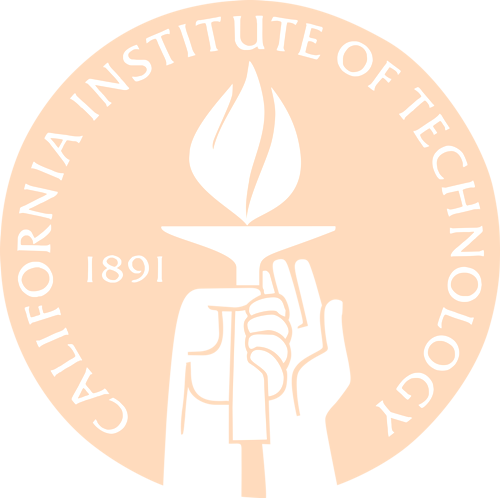Home
People
Project Details
Protocols
Completed Systems
Notebook
Biosafety
Human Impact
References
Support
|
Back to Notebook
Monday 6/21
- Transformed additional bricks from distribution with other antibiotic resistances onto plates & liquid culture.
- [http://partsregistry.org/wiki/index.php?title=Part:BBa_I15008 I15008], [http://partsregistry.org/wiki/index.php?title=Part:BBa_I15009 I15009], [http://partsregistry.org/wiki/index.php?title=Part:BBa_I15010 I15010], [http://partsregistry.org/wiki/index.php?title=Part:BBa_E0033 E0033], [http://partsregistry.org/wiki/index.php?title=Part:BBa_M30109 M30109], [http://partsregistry.org/wiki/index.php?title=Part:BBa_K112000 K112000], [http://partsregistry.org/wiki/index.php?title=Part:BBa_J09250 J09250]
Tuesday 6/22
- Transformation success is ambiguous - the plates are covered in a lawn of bacteria, apparently indicating an issue with the antibiotic selection. This implies either a problem with the stock solution of antibiotic (Kan/Strep), or the procedure of plating the antibiotics on the surface of the LB-agar plates.
- To find out what happened, we set up a simple experiment for both ampicillin (amp) and streptomyocin (strep):
- Take 3 LB-agar plates with no antibiotic and plate 50uL of 1000x, 10x, or 2x antibiotic stock solution on each, spreading with sterile glass beads. Let the plates dry for 1 hour at RT. Additionally, prepare an LB-agar plate containing the desired antibiotic in the agar. Split all four plates in half and streak each plate with both a cell strain that should be resistant to your antibiotic, as well as a strain the should not be. Incubate the plates overnight at 37C.
- If the antibiotic was prepared correctly, and is present in high enough concentration on the plate, only half of the plate should have any colonies present: the side with the desired resistance. Plates with cells on both sides do not have enough antibiotic; those with no cells have too much.
- Re-performed the transformations on two of the bricks & plated on LB-agar plates with the antibiotic incorporated.
Wednesday 6/23
- Transformation plates are still covered in a film of bacteria. The negative control for the kanamycin test grew bacteria, suggesting that there is an issue with the kanamycin stock, which we will have to remake.
- The amp & strep antibiotic test plates indicate that plating 50uL of 1000x stock is sufficient for proper bacterial selection:
Thursday 6/24
- Our NEB Biobrick assembly kit arrived today! We began digesting & ligating bricks to assemble our light induction/lysis construct.
- Desired construct: [http://partsregistry.org/wiki/index.php?title=Part:BBa_R0082 R0082] (light-induced promoter) + [http://partsregistry.org/wiki/index.php?title=Part:BBa_B0034 B0034] (RBS) + [http://partsregistry.org/wiki/index.php?title=Part:BBa_K124017 K124017] (lysis gene cassette) + [http://partsregistry.org/wiki/index.php?title=Part:BBa_B0015 B0015] (terminator) in a non-amp/non-cm backbone (since our light transduction brick, M30109, is A/C resistant).
- Began five digests according to the NEB Biobrick assembly kit protocol:
- [http://partsregistry.org/wiki/index.php?title=Part:BBa_R0082 R0082] (us)
- [http://partsregistry.org/wiki/index.php?title=Part:BBa_B0034 B0034] (ds)
- [http://partsregistry.org/wiki/index.php?title=Part:BBa_K124017 K124017] (us)
- [http://partsregistry.org/wiki/index.php?title=Part:BBa_B0015 B0015] (ds)
- Cm linear backbone ([http://partsregistry.org/wiki/index.php?title=Part:BBa_pSB1C3 pSB1C3])
- Began two ligation reactions according to the Biobrick assembly kit protocol:
- [http://partsregistry.org/wiki/index.php?title=Part:BBa_R0082 R0082]/[http://partsregistry.org/wiki/index.php?title=Part:BBa_B0034 B0034]/[http://partsregistry.org/wiki/index.php?title=Part:BBa_pSB1C3 pSB1C3]
- [http://partsregistry.org/wiki/index.php?title=Part:BBa_K124017 K124017]/[http://partsregistry.org/wiki/index.php?title=Part:BBa_B0015 B0015]/[http://partsregistry.org/wiki/index.php?title=Part:BBa_pSB1C3 pSB1C3]
- Transformed the ligation products into DH5alpha (Invitrogen) competent cells via heat shock and plated (incorrectly) on LB-amp plates.
- Set up antibiotic test plates for kanamycin (kan) & tetracycline (tet), just as on 6/22.
Friday 6/25
- Re-transformed the ligation products from 6/24 into DH5alpha cells via heat shock and both: plated 100uL of cells on LB-cm plates and added remainder to create LB-cm liquid culture. Both were incubated overnight at 37C.
- Checked kan/tet antibiotic test plates: again, plating 50uL of 1000x stock antibiotic appears to be adequate for proper selection. Unfortunately, the XL1 Blue cells we used last week do not appear to actually be tet-resistant (as advertised).
- Designed forward & reverse sequencing primers, using the sequences of [http://partsregistry.org/wiki/index.php?title=Part:BBa_G00100 G00100] & [http://partsregistry.org/wiki/index.php?title=Part:BBa_G00101 G00101], which bind to the standard prefix & suffix of the provided plasmid backbone. Note: according to the [http://www.idtdna.com/analyzer/applications/oligoanalyzer/ IDT oligo analyzer], the forward primer creates a strong (~9kcal/mol) homodimer, which melts at about the primer melting temp of 55C (according to [http://nupack.org/ NUPACK] analysis). We decided to take a chance and order the [http://partsregistry.org/wiki/index.php?title=Part:BBa_G00100 G00100] & [http://partsregistry.org/wiki/index.php?title=Part:BBa_G00101 G00101] provided sequence since it is specified by the Registry (and therefore hopefully works), even though a better primer could conceivably have been designed (which would probably require different forward primers for each different plasmid). Placed the order for these primers with [http://www.idtdna.com/Home/Home.aspx IDT] today.
- Made LB-agar plates (blank, tet, kan)
Weekend 6/26-27
Saturday 6/26
- Mini-prepped the transformation liquid cultures of the ligation products from 6/25 to extract the plasmid DNA. The pBAD18 positive control contained > 500 colonies (while the pBAD cells in the LB-cm liquid culture did not grow, as expected). Each of the LB-cm agar plates contained 3 colonies, indicating that we should transform > 1uL of ligation DNA in future transformations or change the ligation reaction concentrations.
- Concentration (ng/uL)
- Ligation 1: 75.5
- Ligation 2: 86.0
- Began 3 digestions on the miniprepped DNA:
- Ligation prod 1 (promoter + RBS, us)
- Ligation prod 2 (lysis gene cassette + terminator, ds)
- Linear backbone, tet resistant ([http://partsregistry.org/wiki/index.php?title=Part:BBa_pSB1T3 pSB1T3])
- Began a ligation reaction using 4uL of digest DNA and 2uL backbone digest DNA (20uL total):
- LigProd1/LigProd2/[http://partsregistry.org/wiki/index.php?title=Part:BBa_pSB1T3 pSB1T3]
- Transformed the ligation product into alpha cells via heat shock (2uL ligation product, 1uL pBAD18 positive control DNA in 20uL aliquots of competent cells).
- Plated 100uL of ligation product cells on an LB-tet agar plate, 100uL of pBAD control cells on LB-amp agar.
- Transferred remainder of cells of each into 5mL LB-tet liquid culture.
- Incubated all overnight at 37C.
Sunday 6/27

|
 "
"
